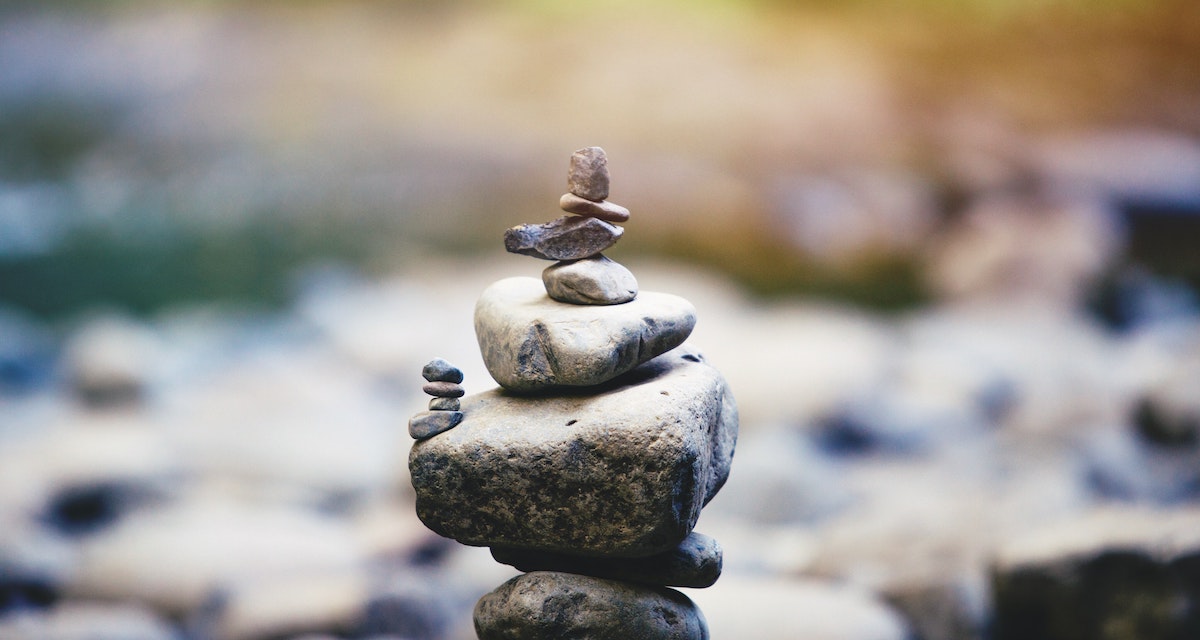How to Find Peace of Mind in 2020
A decade ago, Lisa Varno ’07 was driving on Route 128 with a van full of her music students when a driver cut her off. She slammed her foot on the brake, gave a warning honk and held back a string of words sure to shock her elementary-aged students. The agitation she felt from that split-second scare lingered for the rest of the morning.
Although that memory is 10 years old, it’s important to Varno for one reason: when put in the same situation today, she doesn’t get angry or call the driver a jerk. Instead, she instructs herself to take a deep breath, relax into her seat and extend compassion to the driver in the other car. As a music-teacher-turned-mindfulness-expert, she imagines that person is “running late for an important meeting and they’re afraid of losing their job” or that “their aggression is a source of deep-rooted, unattended grief.”
The situation is the same, but her response is different because of a practice called mindfulness. It’s often defined as “kind awareness.” Mindfulness is really kindness, self-control, patience, love and gentleness at work—all of which are fruits of the spirit listed in Galatians. Although mindfulness can be practiced by anyone regardless of their personal beliefs, mindfulness is a well-documented spiritual practice in Christianity, Buddhism, and every other major world religion.
Because many of us are feeling extra fragile these days—physically, emotionally and spiritually— The Bell interviewed mindfulness teacher Lisa Varno ’07 about ways in which mindfulness can help us regain some strength and peace of mind.
After getting her master’s degree in music education and teaching general music and choral music in the public school system for 10 years, Varno realized she needed a new dream, preferably one that encouraged a slower pace and enabled her to work with people one-on-one. First, she became a yoga and meditation instructor. Then she went on to study mindfulness-based stress reduction at Brown University’s School of Public Health and University of Massachusetts Medical School, and recently became a certified integrative health coach through Duke Integrative Medicine. Today, Varno is an integrative health coach at Lantern Health, where she regularly encourages her patients to develop mindfulness practices of their very own.
Here’s what you need to know to start yours:
Mindfulness Grounds Us in the Present Moment
The opposite of mindfulness is called “mindlessness.” It’s our default mode. Varno elaborates, “We spend a lot of our life flip-flopping between the past and future.” We worry. We make plans. We fantasize about what’s to come and ruminate on the past. However, “With mindfulness, you create new neural pathways. You bring the present into focus.”
Beginners can start by paying attention to physical sensations, says Varno. Maybe you notice how much you enjoy the sound of biting into an apple or the smell of fresh laundry as you’re folding clothes. Eager to give it a try? Here is a five-minute mindfulness exercise to help you tap into your five senses.
Mindfulness Helps Us Be More Compassionate
Mindfulness begins with self-compassion. On the surface, self-compassion is easy to confuse with selfishness. They both share the prefix “self,” but that’s where their similarities start and end. Varno explains, “If I can have a less judgmental or critical relationship to myself, then I will extend that to others.” In other words, you cannot love others properly if your own pain and insecurities constantly get in the way.
Although self-compassion may feel uncomfortable in the beginning, you’ll notice that over time you’re less anxious, less depressed, less afraid of failure and that you experience greater social connectedness, happiness and life satisfaction. Here’s a 15-minute guided mediation to get you started.
Mindfulness Teachers Are All Around Us
Like most of us, Varno’s first experience of mindfulness occurred during childhood. She grew up in the Catskill Mountains and remembers driving long distances in the car to get to and from her home. “I spent hours and hours in the car looking out the window and taking in the scenery as it was passing by,” she says. “That in and of itself is a mindfulness practice. Children are some of the best teachers of mindfulness, as are babies and dogs. They live moment to moment.”
Want to practice mindfulness with your kids? Here’s an eight-minute guided meditation to help you and your children notice happy moments.
Mindfulness Turns Down the Volume and Intensity of Common Stressors
“Mindfulness is not a magic wand where ‘poof’—the stress goes away,” says Varno. “But our relationship to our stressors shifts. There is less intensity. And our stressors can become more manageable.” The truth is a lot of the things that stress us out don’t disappear overnight. They stick around. People will cut us off on the highway again and again, so it shouldn’t come as a shock every time. Varno says, “I notice when I want to run away from a stressor and the practice of mindfulness has invited me to turn toward it, which is very counterintuitive. In turning toward a stressor and being curious about it, stress can actually loosen its grip.”
From working through difficult emotions to addressing anxiety, here are five guided meditations that can help you turn down the intensity.
If You Don’t Have Time for It Then You Need It Most
If you don’t have time for mindfulness, then you need it most, says Varno. “Mindfulness opens our eyes to what’s really needed, as far as how we fill our days. It helps us uncover what’s most important to us. Just look at little pockets, little windows in your day. Start to sprinkle some formal or informal mindfulness practice in. It could be as simple as bringing all your awareness to something you do every day like brushing your teeth or making a meal.”
For more ideas on how to transform everyday tasks into moments of mindfulness, check out mindful.org’s article, “Life’s Most Thankless Tasks Revisited.”
 The Bell
The Bell